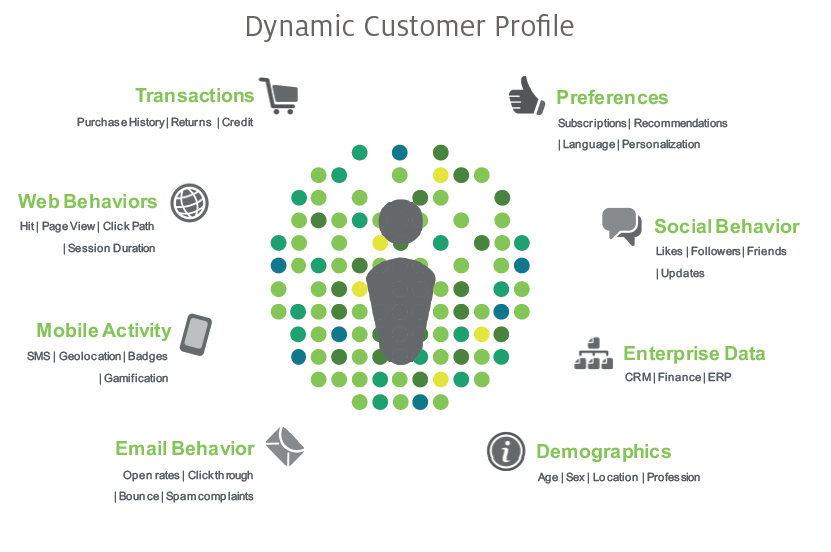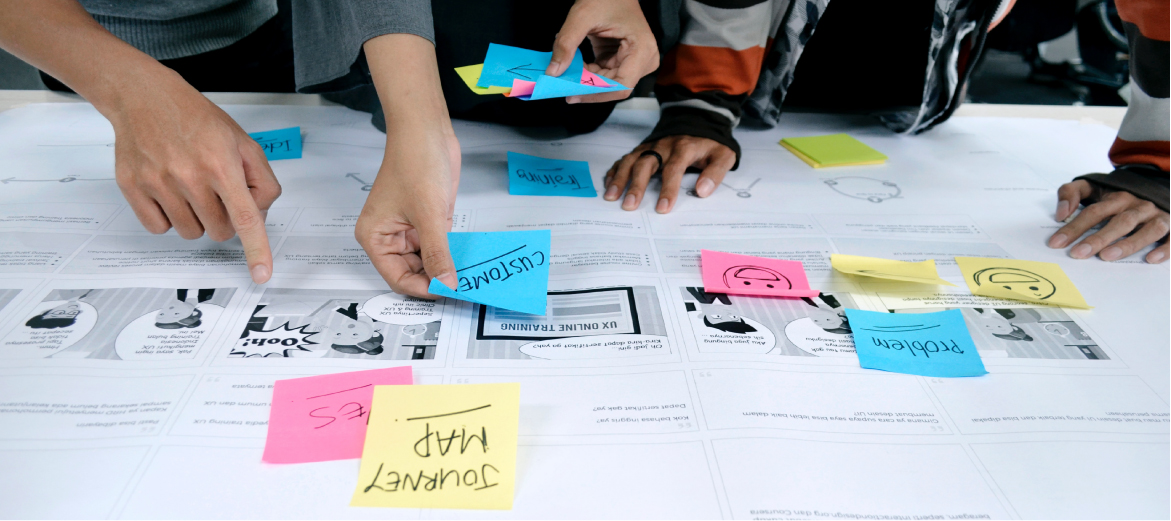With nearly every business having an online presence, brands need to find creative ways to differentiate themselves. Personalization drives growth for businesses and helps nurture consumers who want their buying intent to be understood and to receive the instant gratification of finding exactly what they’re looking for. Common pain points that businesses with an online presence have are:
- Lack of consumer insights or having too much data
- Broad, undefined, or stagnant brand strategy
- Low Return on Ad Spend (ROAS) or conversion rates on your marketing campaigns
- Low brand loyalty / return purchasers
If any of these apply to you, the following tips may help determine actionable next steps for how to improve your personalization strategy.
Defined, consistent and up-to-date marketing strategy
It’s important to understand your marketing goals to create an efficient personalization strategy. There are a few questions you want to answer before jumping right in. What is your overall marketing goal? Is it to increase brand awareness? Gain repeat customers? Expand into new markets? Knowing what you want to accomplish will help create a cohesive marketing strategy to determine which tactics you want to move forward with. It’s also important to think about what you want your brand to represent and the voice you want your audience to resonate with. What’s your brand mission? What are your company values? Your mission and values should be your brand’s north star—use these as a baseline to create or update your marketing strategy.
Gather consumer behavior data
A common pain point is having too much data and not knowing what to do with it. Start small, analyze the results, and refine your strategy to work your way up towards more complex personalization methods. Gather consumer behavior data by tracking how your users are engaging with your brand. What are they clicking on your page? What have they engaged with on your social media? Tracking their engagement helps you understand more about them. Once you’ve compiled substantial behavioral, demographic, and/or firmographic data, you’re able to nurture this audience and understand what their intent is. As a result, you’ll be able to deliver the right content at the right time. Developing buyer personas could help build your marketing tactics to convert this audience and build more brand loyalty, and it could also allow you to target new leads and increase your brand presence.

Source: Knexusgroup
Personalization methods
Trigger-based personalization
The foundation of personalization is acting on behavioral data. Trigger-based personalization is a simple method to start with. This is when the user experience changes based on specific actions taken by the user. Begin with identifying any trends in the data you’re seeing on your page and consider what type of personalized content you’d like to serve to our audience. For instance, if a user has filled out a form (i.e. newsletter sign-up, whitepaper, etc.), you want to ensure that the next time they visit the page, they aren’t asked to fill out that form again. At this point, you have baseline data of who this person is and now you want to focus on nurturing these users by sharing your value prop or key differentiators to keep them engaged. Share messaging to promote a service that ties into the whitepaper or a promo code for coming back again; this will help nurture these users further down the funnel.
Customer journey personalization
Effective web personalization maps to the customer journey, which typically varies between each industry (B2B, B2C, healthcare, etc.). These are some helpful guidelines to focus on within each step of the customer journey; it’s important to keep in mind that at every point in the customer journey to take your learnings and monitor and optimize your campaigns!
- Awareness: Collect behavioral data from initial interactions and identify user attributes. Lead scoring can help segment audiences or user intent.
- Consideration: Target relevant audiences and serve them value prop messaging. Enable omni-channel targeting to bring them back to your website. This is where you can start serving personalized content based on previous interactions or behavioral data.
- Conversion: Retarget your audience through multiple channels. Tailor your campaign’s retargeting tactics with key differentiators or incentives like discounts for an email or text sign-up.
- Retention: Promote related products or services based on their purchase to give you a cross-selling opportunity. Keep them engaged by offering a loyalty program with exclusive membership offers or ask for feedback to improve your brand. Additionally, add them into an email nurture to maintain a regular touchpoint with them.
- Advocacy: These are your all-stars. Make them feel appreciated! Provide customer support by creating a customer community forum or an incentivized referral program to cast a wider net and provide incentives for your advocates to share your brand with their network.
Below is a template that can help you map out specific personalization tactics within each stage of the customer journey. We use tools like Sitecore CMS to develop and deliver highly personalized customer experiences. Need assistance in managing the customer journey? Take a look at this article that talks about customer journey management with Salesforce Marketing Cloud.

Machine learning for personalization
Machine learning helps teams make the most of the data by diving deeper into shopper behavior, creating dynamic content, and enabling personalization at scale. Machine learning helps you scale and automate, increasing content relevancy while reducing manual effort. These algorithms collect real-time data to implement insights at the exact moment certain interactions are taking place. It can also geotarget leads based on location, providing them with relevant content across channels, connecting their offline purchases to their online browsing behavior. Machine learning allows you to create opportunities from data while eliminating redundancy and optimize your campaign budget. Another major benefit to machine learning is that it frees up time to focus on creative ideas and strategy.
Key outcomes
- Increased conversion + ROAS: Personalization can reduce acquisition costs by as much as 50%, lift revenues by 5–15%, and increase marketing spend efficiency by 10–30%. Once you have a strong understanding of who your audience is, you’re able to apply those learnings and efficiently optimize your marketing campaigns to help capture new leads or reengage existing ones.
- Increased brand affinity/loyalty: Improving the customer experience, increasing brand perception, and customer acquisition are just a few benefits of personalization to list. As more users move further down the funnel, your brand’s share of voice will increase, and you’ll have the opportunity to engage more people.
- Higher cross-sell opportunities: Identifying trends in your audience’s buying behavior helps you cross-sell related products or services, resulting in more revenue.

Digital transformation done right
We create powerful custom tools, optimize packaged software, and provide trusted guidance to enable your teams and deliver business value that lasts.

Crystal Ta is a Consultant at Logic20/20 who specializes in project management and data insights/analytics from multi-channel campaigns. She has extensive experience in marketing operations – including coordination, development, and implementation of marketing campaigns – and is a goal-oriented problem solver, dedicated to producing ideas that lead to meaningful solutions for our clients.

